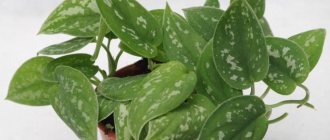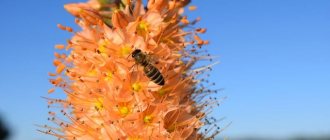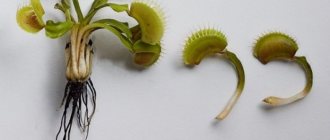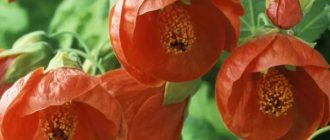Author: Elena N. https://floristics.info/ru/index.php?option=com_contact&view=contact&id=19 Category: Houseplants Published: February 09, 2019Last edits: January 11, 2021
- Growing from seeds
- Royal Strelitzia (Strelitzia reginae)
Strelitzia is an unusual flower with amazing, unique beauty. Strelitzia flowers can remain fresh when cut for about a month, and remaining on the plant they wither faster than in a vase. You should know that Strelitzia juice is poisonous, so you should keep the plant away from children and animals.
Strelitzia flowers resemble the shape of a bird with variegated plumage, and if you want to grow this treasure on your windowsill, read our article. From it you can learn:
- what types of strelitzia exist;
- how to care for a flower at home;
- how to make a plant bloom;
- how to propagate strelitzia.
Planting and caring for Strelitzia
- Flowering: in spring for one and a half months.
- Lighting: bright diffused light (western or eastern window sills).
- Temperature: during the growing season - normal for residential premises, but in winter - no higher than 14 ˚C.
- Watering: during the period of active growth - moderate but frequent: the soil should be slightly moist all the time; in winter - no more than once every 10 days.
- Humidity: high. The plant requires spraying the leaves in hot weather.
- Fertilizing: during the period of active growth and flowering, alternately with organic and mineral fertilizers three times a month.
- Rest period: conditional, in winter.
- Transplantation: young Strelitzia are replanted annually, adults - once every 3-4 years.
- Reproduction: freshly collected seeds, side shoots and parts of those plants that are 6-7 years old.
- Pests: scale insects, mealybugs, aphids and spider mites.
- Diseases: in general, the plant is resistant, but root rot can develop from excessive moisture of the substrate.
Read more about growing Strelitzia below.
plant (lat. Strelitzia) , or strelitzia , is a type genus of the Strelitzia family, consisting of only four species, whose range is located in South Africa and Madagascar. The Strelitzia flower was named in honor of Charlotte Sophia of Mecklenburg-Strelitz, Queen of Great Britain, wife of King George III. By the way, one of the types of strelitzia was called “royal”, and another type was called Strelitzia Nicholas in honor of the autocrat of the All-Russian Nicholas I. This is the royal pedigree of Strelitzia. In common parlance, Strelitzia is called the “bird of paradise,” and this name most fully reflects the extraordinary beauty of the flower.
Growing from seeds and vegetatively
To get seeds at home, you need at least a couple of simultaneously flowering strelitzia. Strelitzia seeds germinate well when freshly harvested, but they quickly lose this quality. Six months after collection, only one out of ten seeds can give birth to a new plant. Therefore, purchased seeds must be sown immediately; the time of year does not matter. Seeds germinate from one and a half to six months.
Strelitzia is usually propagated indoors by division after flowering. The roots are fragile, so you need to separate them carefully. If the roots are damaged, the plant may die . It is necessary to ensure that each separated root has at least two growth points.
In adult perennial plants, side shoots may also appear, which can also be used for vegetative propagation. But this doesn't happen often.
Read about growing Strelitzia here.
Botanical description
Strelitzia flowers in nature are evergreen herbaceous perennials, the largest of which reach a height of more than ten meters, and the rest - from two to three and a half meters. The root system of Strelitzia is taprooted, going deep into the ground. Strelitzia leaves are large, oval-shaped, leathery, green with a bluish-blue bloom, from 30 to 200 cm long, from 10 to 80 cm wide, strongly reminiscent of banana leaves, only with longer petioles - from 50 to 90 cm. Flowers on a long peduncle with orange and purple petals in a horizontal inflorescence, similar to the crest of a strange bird, reaching a diameter of 10 to 20 cm. From 5 to 7 flowers open on one peduncle, and there can be six or more peduncles on one plant, which is why Strelitzia blooms can last up to six months. With proper care, indoor Strelitzia can bloom not only for a long time and profusely, but also several times a year. Strelitzia flowers last a long time when cut - from two to four weeks.
- Hornwort: keeping in an aquarium, types and photos
About diseases and pests
With proper care, Strelitzia is very resistant to diseases and pests . If you do not care for it properly, the plant may develop:
- scale insects;
- mealybug;
- spider mites.
If the leaves turn yellow and are covered with small brownish dots and a clear, sweetish substance, this indicates the presence of scale insects. To get rid of it, you can manually remove all brown plaques and treat the leaves with soapy water.
To make this task easier, you need to first irrigate the strelitzia with vinegar or alcohol - this will make it easier to remove insects from the plant. And the soap solution will prevent them from attaching to the leaves and stems. You can use chemicals, such as Aktara, to get rid of scale insects .
- If overwatered, the roots of Strelitzia will begin to rot and the leaves will turn yellow.
- Leaves also turn yellow when the air temperature is too low and there is insufficient lighting.
- Dry leaf tips indicate a lack of moisture in the soil.
Unusual and unpretentious, Strelitzia will decorate any room with proper care and will delight you with its fabulous flowers for many years.
Strelitzia care at home
Growing conditions
Strelitzia at home is not at all capricious, despite its exoticism. It is best to place it on the east or west side under bright diffused light, but at the same time protecting it from direct sunlight. Strelitzia is thermophilic, but likes to spend the winter in a cool room, where the temperature does not rise above 14 ºC. The rest of the time she will be comfortable at the temperature that suits you.
The houseplant Strelitzia loves fresh air, and if you have the opportunity to take it out to the balcony or garden in the summer, be sure to use it, but remember that Strelitzia needs to be shaded from the bright sun and protected from the wind.
Water Strelitzia in the warm season so that the soil is slightly moist all the time - often, but not too much, avoiding stagnation of moisture in the roots. In winter, it is enough to moisten the soil once a decade. Water for irrigation is settled or filtered and, if necessary, heated to room temperature or a couple of degrees warmer. Homemade strelitzia prefers slightly increased air humidity, so in hot weather its leaves should be sprayed or wiped with a damp sponge.
Caring for Strelitzia involves alternately applying organic and mineral fertilizers three times a month during the period of active growth and flowering. When Strelitzia fades, stop feeding for 2-3 months while the dormant period lasts. Before placing the plant to rest in cool conditions, it is better to cut off the flower stalks.
Transfer
Annual spring replanting of young plants accelerates their development. Adult plants are not transplanted so often - after 3-4 years, since the fragile roots of Strelitzia are often injured during transplantation. How to plant Strelitzia to relieve the root system from stress?
First, let's prepare the soil for Strelitzia: loose, fertile soil is made up of leaf, humus and turf soil, peat and sand in equal proportions. A pot for Strelitzia is chosen high and deep, a thick layer of drainage material is placed on the bottom, then a layer of soil, and after that the plant is carefully transferred, if it is healthy, into a new container. All that remains is to gradually add soil to the pot and compact it until there is enough soil.
- Laurel (Laurus) – care, photos, types
If the plant has problems with the root system, then planting Strelitzia in a new pot is preceded by removing all unhealthy and suspicious areas from the roots and treating the wounds with crushed charcoal.
Pests and diseases
Sometimes Strelitzia is affected by spider mites, mealybugs or scale insects. Scale insects and scale insects are destroyed by double treating the plant with actara with an interval of three weeks between sessions. Ticks are eliminated with acaricides. Strelitzia is very disease-resistant, and if you care for it properly, it will always be healthy and beautiful.
Why doesn't Strelitzia bloom?
The plant begins to bloom when it reaches four to five years of age, but what if Strelitzia does not bloom, although it has already matured enough to do so? Give it temperature stress: take the plant out in winter or early spring for a while to an insulated balcony, loggia or unheated veranda when the temperature there is between 10-12 ºC. After this, move it to its usual conditions, place it in a well-lit place, resume normal care and wait for flowering.
Transfer
The roots of the plant grow strongly, which is why you need to choose a spacious pot. Otherwise, the plant's roots will grow upward. Transplantation occurs by transferring the plant. Young plants need to be replanted regularly, and older plants as needed.
During replanting, it is necessary to protect the fragile root system from damage. In case of damage, sprinkle the injury area with charcoal.
Strelitzia propagation
Growing from seeds
Strelitzia seeds lose their viability very quickly. It is best to propagate the plant with freshly collected seeds, but at home they can only be obtained by artificial pollination of the plant, therefore, when buying Strelitzia seeds in a store, carefully look at the labeling, since only every tenth of the seeds that are six months old is viable. After purchasing, sow the seeds without delay and regardless of the time of year, but first soak them in warm water (35-40 ºC) for a day, constantly changing the cooled water to warm. Then remove any remaining fruit pulp from the swollen seeds, if any.
While the seeds are swelling, prepare a soil mixture of peat, compost and river sand in equal proportions, fill 2/3 plastic cups with a capacity of 250 ml with it, making several holes with a diameter of 5 mm in the bottoms of the cups. Pour boiling water over the soil, compact it, let it cool, pour a two-centimeter layer of sand on top, then put a seed in each glass and press it into the sand so that the “backs” of the grains remain visible. Now place the cups with the crops in a bright, warm (22-24 ºC) place where there is no direct sunlight, cover with glass and forget about them until you see the first leaf.
This will not happen soon - you will have to wait from one and a half to six months - but try to overcome the temptation to remove the glass before the shoots appear. And even then, when some seedlings give the first leaf, you can remove the glass from them only for 15-20 minutes a day, but the rest of the cups should remain under the glass. Sprouted seeds require moistening the soil with boiled water, which is carried out only after the top layer has dried. Grown seedlings are carefully transplanted into larger pots. Remember that the roots of Strelitzia are taprooted, long, thick and fragile, and injury to them can lead to growth retardation or even death of the plant. Young Strelitzia are grown at a temperature of 22 ºC, good lighting and moderate watering.
Vegetative methods of propagation
For this type of propagation, side shoots of Strelitzia or parts of a plant that is already 6-7 years old are used. It is best to divide Strelitzia after it has finished blooming. The plant is removed from the pot and divided so that each division has at least one shoot. Delenki or side shoots, depending on their size, are planted in pots with a diameter of 16 to 20 cm, the composition of the earth mixture is the same as for Strelitzia seedlings. We remind you once again: try not to damage the roots of the plant.
- Photo of Radermachera chinensis
Strelitzia nicolai
Strelitzia can rightfully be called a royal flower. Not only did the entire genus and the first species receive the name of the British queen, another variety of the flower began to be named in honor of Grand Duke Nikolai Nikolaevich, who was passionate about the plant world and oversaw the St. Petersburg Botanical Garden.
As follows from the description, this species of Strelitzia can rightfully be classified as one of the largest greenhouse plants. Therefore, it is not surprising that birds act as pollinators in nature, but in a potted plant the flower has to be pollinated by hand.
Growing up to 10 meters in height, the plants resemble a banana in appearance, which influenced the appearance of the popular name Strelitzia. The long leaves of wild banana with powerful petioles are actively used by the population for making fences, ropes, and roofing.
In spring, the trunks, more like palm trees, are decorated with white and blue inflorescences in purple, greenish-red, hard stipules.
Kinds
Royal Strelitzia (Strelitzia reginae)
The most commonly grown plant is Strelitzia regal, which is also called Strelitzia parvifolia. This species lives in the Cape Province of South Africa, in mountain forests and reaches a height of two meters. Large, up to 45 cm long, slightly wavy at the edges, the leathery leaves of Strelitzia regal, dark green in color, on petioles up to 90 cm high, are collected in dense rosettes. The peduncle is tall, axillary, with a green spathe with red veins. The flower's outer petals are orange, up to 15 cm long, and the inner petals are dark blue. Strelitzia reginae blooms twice a year.
Strelitzia nicolai
It also grows in tropical forests, gorges, and mountains at an altitude of about 300 m above sea level in the Cape Province. The plant resembles a banana in appearance, which is why it is sometimes called the “wild banana of Natal”. Strelitzia Nicholas grows up to 10 meters in height, therefore it is a tree species. Its “trunks” look like palm trees because of the scars from fallen leaves. The flowers are as monumental as the plant itself: on an axillary peduncle, with four beak-shaped red-green spathes, with white outer and blue inner petals up to 17 cm long.
Mountain Strelitzia (Strelitzia caudata)
It grows in the very south of Africa. This is a rare species, locally called the “desert banana.” Strelitzia montana is a tree-like plant, reaching ten meters in height, with giant leaves growing in two rows and clasping the bottom of the trunk. The flowers are also large, white, with pointed red bracts in the shape of boats up to 45 cm in length.
Strelitzia juncea
It grows in the east of South Africa and tolerates long-term drought and sudden temperature changes, down to sub-zero. In flowers it is very similar to Strelitzia regal, but its leaves are narrow, needle-shaped, growing in a dense rosette with a diameter of two meters.
Strelitzia Augusta, or white strelitzia (Strelitzia alba)
Also from South Africa, from the Cape Province. This is a perennial plant with a woody lower part. Its long, elliptical, glossy, light green leaves reach a length of one meter and are heart-shaped at the base. Peduncles are axillary, with two lanceolate bracts, with a single purple spathe. The flower petals are white.
There is also a hybrid of Strelitzia regal and Strelitzia alba.
What kind of plant is this?
Strelitzia reginae (in Latin Strelitzia reginae) is a perennial herbaceous plant. They belong to the family Strelitziaceae and the species Strelitzia. It is also called:
- "Bird of paradise";
- "Royal Bird".
Strelitzia regala has beautiful and bright blooms.
We invite you to watch a video about Strelitzia Royale:
Appearance
In the mid-18th century, the British discovered the plant on the lands of South Africa. Now grows on the coasts of:
- Mexico City;
- Bangladesh;
- Chile.
They named it in honor of the wife of the English King George III, Charlotte of Mecklenburg-Strelitz.
Strelitzia is considered the official symbol of Los Angeles and the national flower of the Madeira archipelago, Portugal.
Difference from others
Its main difference is compactness and accuracy. It has small leaves, is much brighter than other Strelitzia species and adapts well to home conditions. And gardeners cultivate it for cutting inflorescences.
Appearance
Strelitzia grows up to one and a half meters in indoor conditions. It has evergreen, powerful, bald, petiolate, oval leaves. They reach a length of 30–55 cm and a width of 10–25 cm. A short false stem appears from the base of the petioles.
The flowers are asymmetrical in shape, the outer leaves of the six-membered perianth are orange, the inner ones are dark blue. They are odorless but rich in nectar.
Possible care errors
If a beloved and such a beautiful flower suddenly began to look bad - the leaves drooped, the tips began to dry out, the flowering stopped or did not start at all, then there are mistakes in care. Let's look at some of them.
The leaves are turning yellow
All the leaves of Strelitzia have turned yellow, and not just the lower few, which is considered normal. This means that the plant was flooded and its roots and stems at the base began to rot.
It is necessary to remove visible affected areas, clean the drainage hole of the pot, and most importantly, reduce watering.
Leaves are drying
There are two reasons for drying leaves: flooded soil or too dry air.
In the first case, it is necessary to adjust the watering regime. In the second, humidify the air and the plant itself by spraying.
Buds do not open
If the Strelitzia began to drop flowers or the buds stopped opening, then the plant was probably moved from place to place.
When Strelitzia blooms, it is better not to touch them or change their location.
The immune system of Strelitzia is very strong. It withstands all natural disasters and is resistant to diseases. But, like any plant, it needs good care and attention.
If you are looking for miniature plants for your collection, pay attention to oxalis, lithops, tillandsias or sundews.











